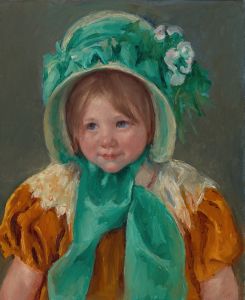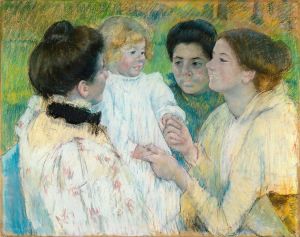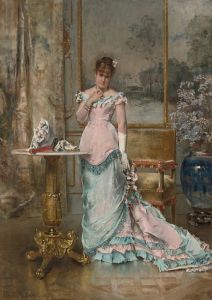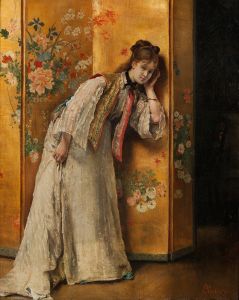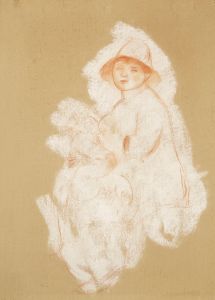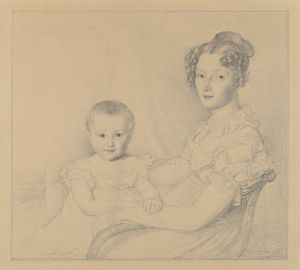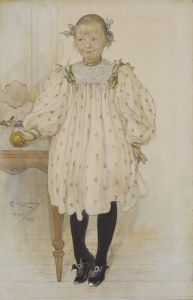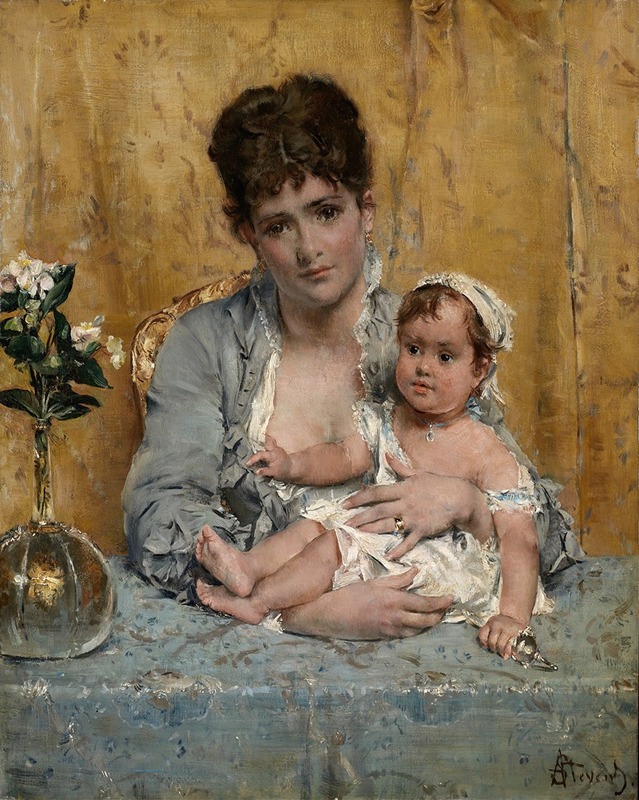
Mother And Child
A hand-painted replica of Alfred Stevens’s masterpiece Mother And Child, meticulously crafted by professional artists to capture the true essence of the original. Each piece is created with museum-quality canvas and rare mineral pigments, carefully painted by experienced artists with delicate brushstrokes and rich, layered colors to perfectly recreate the texture of the original artwork. Unlike machine-printed reproductions, this hand-painted version brings the painting to life, infused with the artist’s emotions and skill in every stroke. Whether for personal collection or home decoration, it instantly elevates the artistic atmosphere of any space.
Alfred Stevens, a Belgian painter known for his exquisite depictions of women and domestic scenes, created the painting "Mother and Child." Stevens was born in Brussels in 1823 and became a prominent figure in the 19th-century art world, particularly noted for his ability to capture the elegance and grace of his subjects. His works often reflect the social and cultural milieu of his time, with a focus on the intimate and personal aspects of life.
"Mother and Child" is a testament to Stevens' skill in portraying tender and intimate moments. The painting features a mother and her child, capturing a serene and affectionate interaction between the two. Stevens' attention to detail is evident in the delicate rendering of the figures and the careful composition that draws the viewer into the private world of the subjects. The use of light and shadow in the painting enhances the emotional depth, highlighting the bond between mother and child.
Stevens' style is characterized by a blend of realism and impressionism, which is evident in "Mother and Child." His ability to depict textures, such as the softness of the child's skin and the fabric of the mother's clothing, adds a tactile quality to the painting. The color palette is typically soft and harmonious, contributing to the overall sense of tranquility and warmth.
Throughout his career, Stevens was influenced by both the academic traditions of his time and the emerging modernist movements. He studied at the Académie Royale des Beaux-Arts in Brussels and later in Paris, where he was exposed to the works of contemporary artists. This diverse artistic background allowed him to develop a unique style that resonated with both traditional and modern audiences.
"Mother and Child" reflects Stevens' interest in the themes of motherhood and domesticity, which were prevalent in his body of work. These themes were not only personal but also reflected broader societal changes during the 19th century, as the roles of women and family life were evolving. Stevens' paintings often depicted women in various roles, from the domestic sphere to more public settings, highlighting their complexity and individuality.
The painting is part of Stevens' broader exploration of the female experience, a subject that he approached with sensitivity and respect. His works were well-received during his lifetime, earning him recognition and accolades. Stevens exhibited regularly at the Paris Salon and was awarded several honors, including the Legion of Honor in France.
Today, "Mother and Child" is appreciated for its artistic merit and its insight into 19th-century life. It continues to be studied and admired for its technical excellence and emotional resonance. Stevens' ability to capture the essence of his subjects ensures that his work remains relevant and engaging to contemporary audiences.
Alfred Stevens passed away in 1906, leaving behind a legacy of paintings that continue to be celebrated for their beauty and insight. "Mother and Child" stands as a representative example of his contribution to the art world, embodying the qualities that have made his work enduringly popular.






